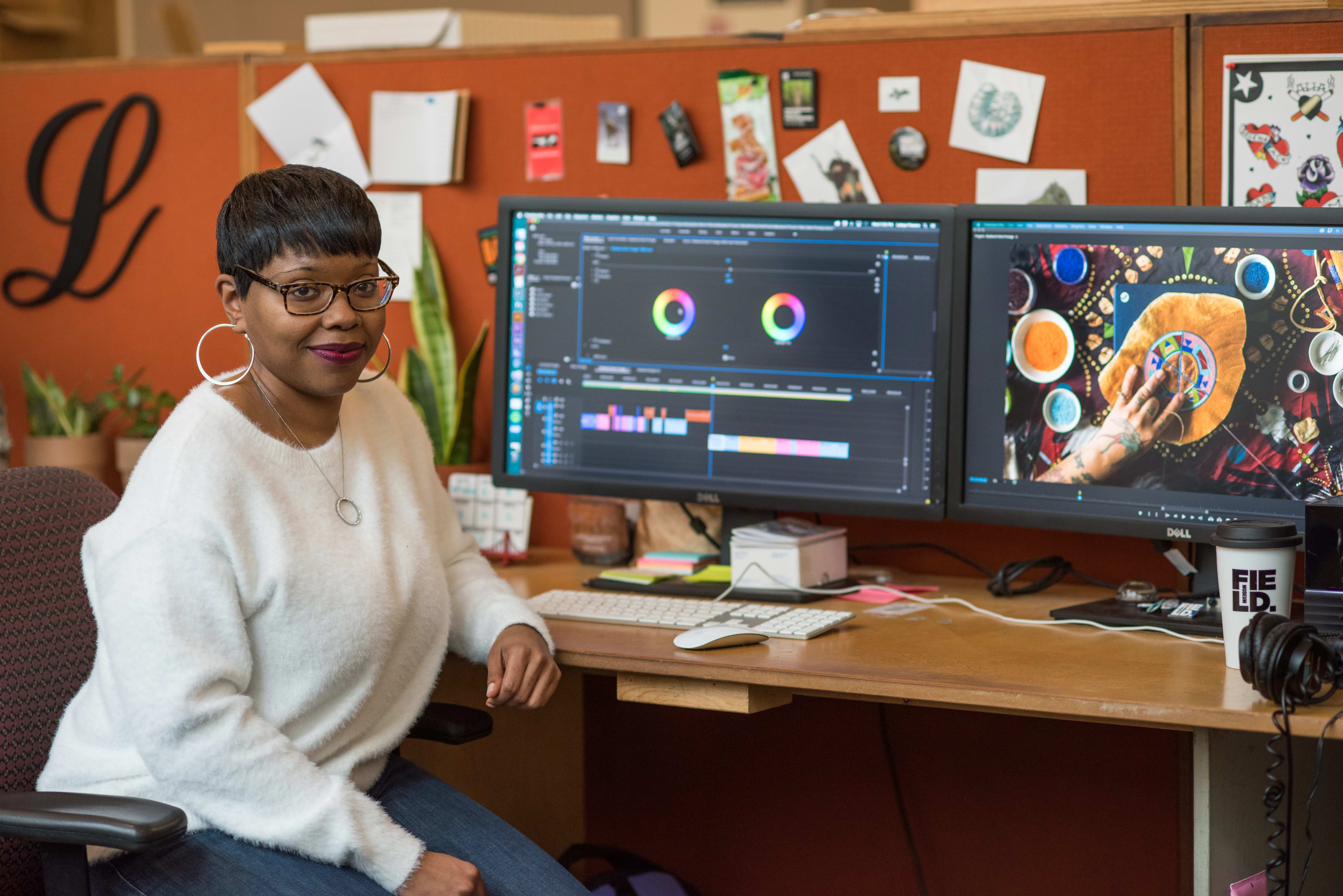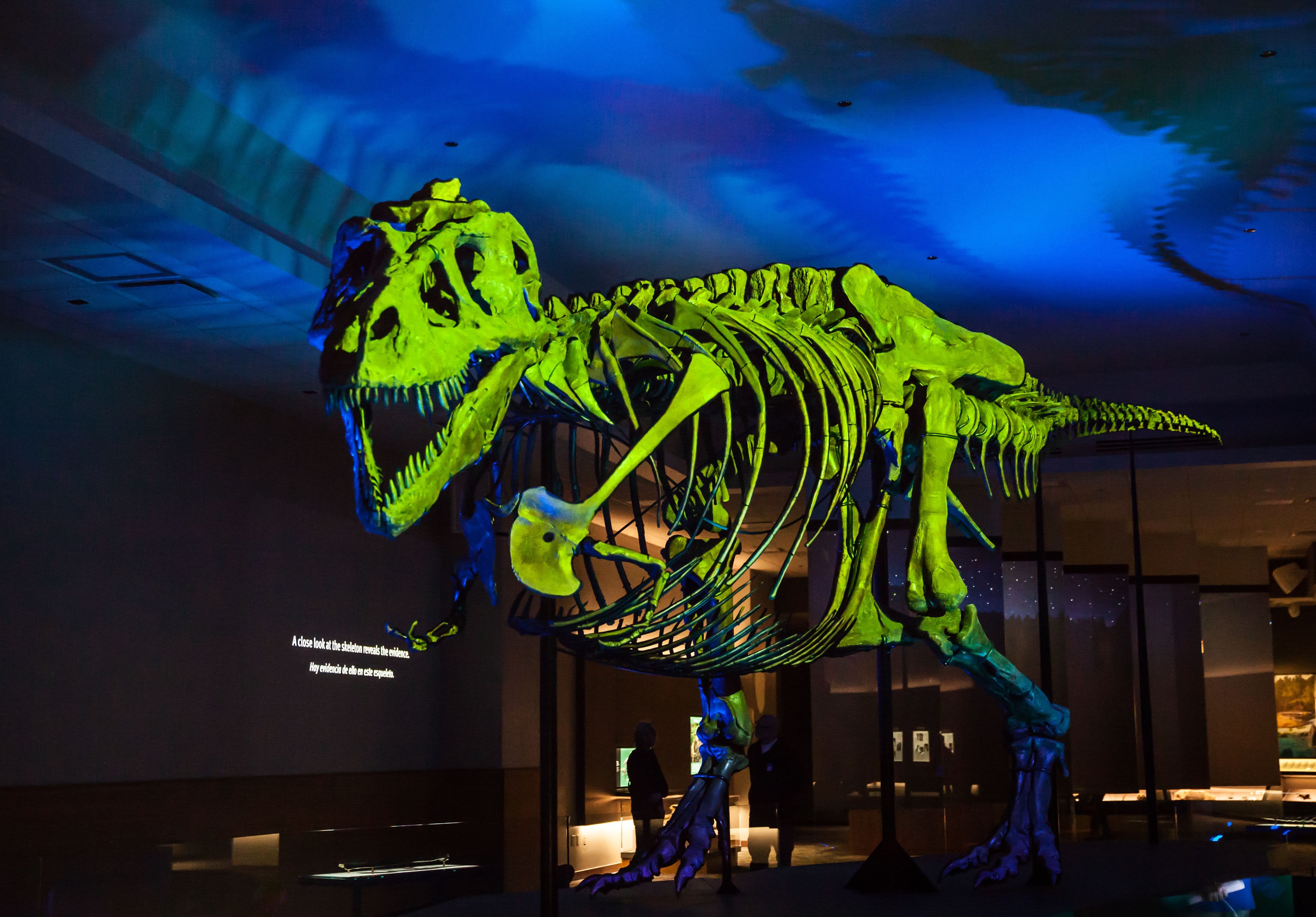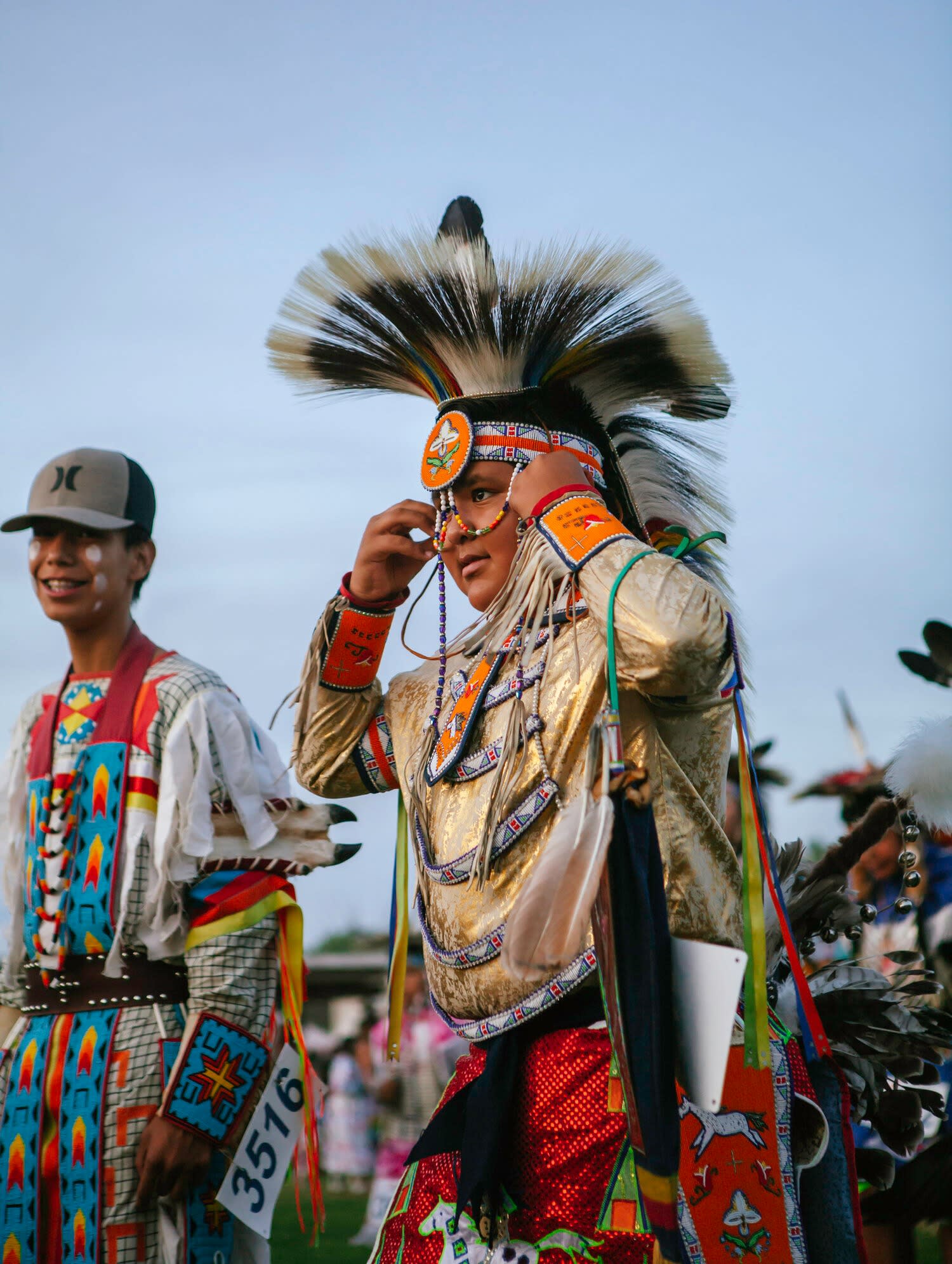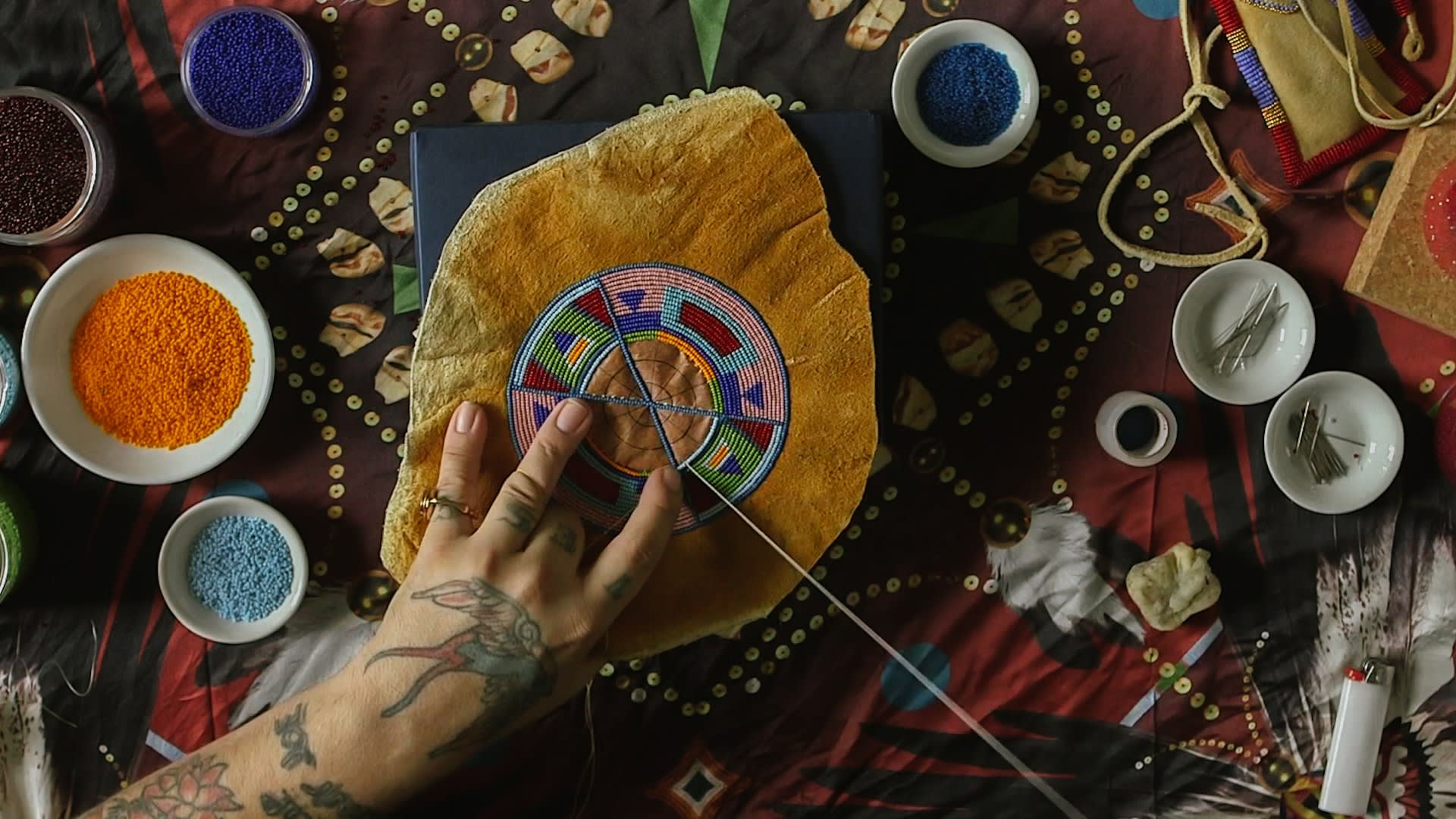This MFA Social Documentary Film alumnus produces media installations for Chicago's Field Museum of Natural History

“Since 1914, when poet Carl Sandburg labeled it ‘City of the Big Shoulders,’ Chicago has been considered a gritty Midwestern American town,” says artist, former graphic designer, SVA alumnus and native Chicagoan Richmond Jones (1961 Advertising). “However, over the decades it has become an amazing gem of international customs, culture and art.” Today, the city’s world-class architecture, food, music, theater and literature make it a natural draw for creative professionals of all types.
In the spring/summer 2020 Visual Arts Journal, SVA's magazine, we spotlighted six SVA alumni who have made their homes and found their niche in the Midwestern metropolis; over the next few weeks, we'll be presenting versions of these features online.
First up is Latoya Flowers (MFA 2012 Social Documentary Film), who lives in Chicago's South Side neighborhood.
Growing up, native Chicagoan Latoya Flowers always liked science and had dreams of working in a museum, but she had no idea that her path of study would eventually lead her there. After graduating from SVA, however, she found that her documentary-film experience made her well suited for producing factual yet captivating multimedia installations. So she brought her skills to Museum Campus, a park on Lake Michigan that is home to three of Chicago’s natural science museums: the Adler Planetarium, Field Museum of Natural History and Shedd Aquarium. Flowers first worked at the planetarium for several years. In 2017, she became the exhibition media producer at the Field Museum next door, and has had a hand in all of the museum’s major exhibitions since.

Exhibition media producer Latoya Flowers (MFA 2012 Social Documentary Film) developed an immersive show for the Field Museum’s “SUE: The T. rex Experience” using precise projection mapping and narration.
One of Flowers’ first tasks at the museum was a lofty one. The institution’s pride and joy, “SUE,” one of the world’s largest, most complete and best preserved T. rex skeletons, was being moved to a new room within the Griffin Halls of Evolving Planet exhibit, in which Flowers was to create an immersive experience. In late 2018, after a year and a half of research, prototyping and implementation, the museum rolled out Flowers’ production, which utilizes projection mapping to highlight specific bones, while a recorded narration covers topics such as how many bones in the skeleton are from the original fossil (90 percent), which ribs had been broken and healed, and how scientists were able to discover how SUE may have died (a jaw infection).
“During the first few weeks after opening, visitors applauded after every show,” Flowers says. “That isn’t something you normally witness in a museum exhibit.”

A photograph by Latoya Flowers (MFA 2012 Social Documentary Film) from the 2019 Crow Fair Pow Wow in Montana, which Flowers attended as part of her work for “Apsáalooke Women and Warriors,” an exhibition at the Field Museum of Natural History, Chicago.
More recently, Flowers produced several media installations for a temporary exhibition, “Apsáalooke Women and Warriors,” which opened in March, just before the museum closed due to the coronavirus pandemic; it highlights the history of the Native American tribe as well as contemporary beadwork, music and fashion created by current Apsáalooke community members. Flowers and her team worked directly with Apsáalooke scholar and curator Nina Sanders, beadwork artist Elias Not Afraid, fashion designer Bethany Yellowtail and documentary filmmakers Aaron Brien and Marty Lopez to “understand the cultural importance of [Apsáalooke] beadwork, fashion and sacred war shields from their perspective,” she says, and to create a platform for the community to “tell their own stories through media.” More visitors will be able to see the exhibition starting this Friday, July 24, when the museum is set to reopen to the public; it is now scheduled to run through April 2021.
Even while the Field Museum was closed to the public due to the COVID-19 pandemic, Flowers still had plenty to do. Starting next month, the “SUE” experience will travel to other museums with a cast of SUE’s skeleton and a more transportable version of the light show, which Flowers has been developing using theatrical and UV lighting. She’s also been preparing media and interactive concepts for an exhibition titled “First Kings of Europe: The Emergence of Hierarchy in Prehistoric Balkans,” as well as a permanent, rotating exhibit about Native American communities and cultures, both set to open in fall of 2021. For the latter, Flowers and her team are collaborating with numerous Native American storytellers and artists to create “story galleries that will swap out every few years to allow the exhibition content to continuously feel new and current,” she says.

A still from a process video about contemporary Apsáalooke beadwork artist Elias Not Afraid, produced by Latoya Flowers (MFA 2012 Social Documentary Film) for the Field Museum's exhibition “Apsáalooke Women and Warriors.”
Though she frequently channels her creativity through her work at Field, Flowers has decided to use some of the free time that working from home during quarantine has granted her to take it one step further. She and her husband Warren, a motion designer, have started a joint collective called Carve Capture, “where we create art without boundaries through motion design, projection mapping and photography,” she says. So far, they have created two at-home projection-mapping projects using an AR projector and Lightform software. “We wanted to create a space where we could be creative without worrying about budgeting and client approvals,” she says. See their completed projects—Clock Twister and Juneteenth—below.

